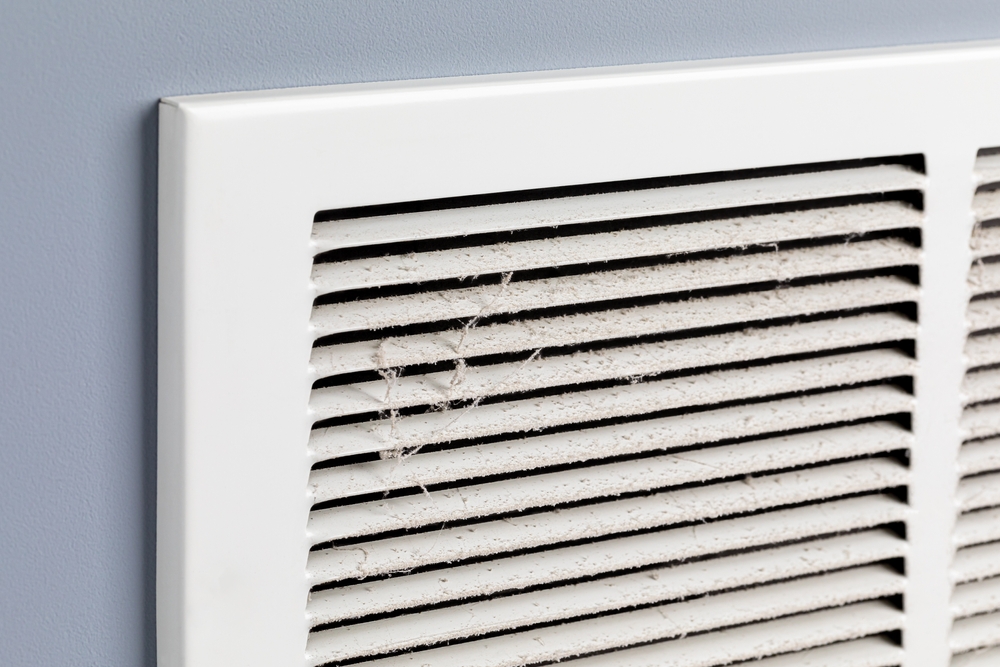
Spring Allergies and Your HVAC: How to Improve Indoor Air Quality in Woodbine, KS
March 31, 2025 4:32 pm Leave your thoughtsAs the seasons change, particularly in the spring, many homeowners in Woodbine, KS, start noticing an increase in allergy symptoms. Pollen, dust, mold, and other airborne allergens tend to become more prevalent during this time of year, which can make it difficult to enjoy the outdoors. However, it’s important to remember that while allergens are often associated with the outdoors, your indoor environment can contribute significantly to your allergy issues. Your HVAC system plays a crucial role in improving your home’s air quality, and with a few adjustments, it can help reduce the number of allergens in your home. Let’s explore how improving your HVAC system and understanding its impact on your indoor air quality can help you breathe easier this spring.
The Connection Between HVAC Systems and Indoor Air Quality
Your HVAC (heating, ventilation, and air conditioning) system does more than just regulate temperature; it is also responsible for the airflow within your home. It pulls in air from different areas, filters it, and circulates it throughout your living space. Unfortunately, if the air in your home is not properly filtered, the system can circulate allergens like pollen, dust, and pet dander, worsening the air quality and triggering allergy symptoms.
To improve indoor air quality, you first need to understand how your HVAC system functions. The air filter within the system captures airborne particles, but not all filters are created equal. A low-efficiency filter might allow smaller particles to pass through, while a higher-efficiency filter can trap these allergens and prevent them from circulating throughout your home. Furthermore, ducts can accumulate dust, mold, and other allergens, which might get released into the air during the HVAC system’s operation. This makes regular maintenance of your HVAC system essential for improving air quality.
Choosing the Right Air Filter for Your HVAC System
One of the easiest ways to start improving air quality in your home is by upgrading your HVAC’s air filter. While standard filters may work for general dust, they might not be effective at trapping finer particles such as pollen, mold spores, or pet dander, which are common allergens. The higher the MERV rating (Minimum Efficiency Reporting Value) of the filter, the better it will trap smaller particles. A MERV rating of 13 or higher is generally recommended for allergy sufferers because these filters are capable of capturing particles as small as 0.3 microns, which is the size of most pollen grains.
Additionally, it’s important to replace the air filter regularly. Over time, filters become clogged with dirt and allergens, making them less effective. Depending on the type of filter you have, it’s generally recommended to replace it every 1-3 months. For allergy relief, replacing the filter more frequently during the spring months when allergen levels are at their highest may make a noticeable difference in indoor air quality.
When selecting a filter, it’s also important to ensure that it’s compatible with your HVAC system. Not all filters fit all systems, so it’s important to check the size and type required for your unit. Some HVAC systems may require specific filters or a particular level of air flow, so consulting an HVAC professional can help you choose the right one to maximize air filtration.
Regular HVAC Maintenance for Cleaner Air
In addition to choosing the right filter, regular HVAC maintenance is essential for improving indoor air quality and managing allergens. Spring is an ideal time to schedule a maintenance checkup for your HVAC system. A professional HVAC technician can inspect and clean various components of the system, including the evaporator and condenser coils, the blower, and the air ducts. This ensures that your system is working efficiently and not circulating dust, mold, or other contaminants that can exacerbate allergies.
During the maintenance appointment, the technician will also clean the ducts, which can accumulate dust, dirt, and mold over time. Duct cleaning can significantly improve the air quality in your home by removing these pollutants and preventing them from being blown into your living spaces. Additionally, your HVAC technician will check the overall condition of the system and ensure that it is operating efficiently, helping to prevent any future issues that could affect air quality.
HVAC maintenance should be performed regularly, ideally once or twice a year. In Woodbine, KS, spring and fall are the best times to have your HVAC system checked. This ensures that your system is prepared for the seasonal changes and will continue to function efficiently throughout the year. Regular maintenance not only helps to reduce allergens but can also extend the life of your HVAC system and prevent costly repairs down the line.
Air Purifiers and Humidifiers: Extra Steps for Improving Air Quality
In addition to ensuring your HVAC system is working effectively, there are other ways to improve the air quality in your home. Air purifiers and humidifiers can help address specific indoor air quality concerns that an HVAC system alone might not fully resolve.
Air purifiers can be a great supplement to your HVAC system. These devices are designed to filter the air in a single room or throughout the entire house, depending on the model. Many modern air purifiers are equipped with HEPA filters, which can capture tiny particles, such as dust, pet dander, and pollen. If you suffer from allergies, an air purifier can significantly reduce the number of allergens in your home. Placing one in your bedroom or other areas where you spend a lot of time can make a noticeable difference in your comfort level during allergy season.
Humidifiers can also be beneficial for indoor air quality. Dry air can exacerbate allergy symptoms by irritating the nasal passages and throat. Humidifiers add moisture to the air, which can help alleviate dryness and keep the respiratory system from becoming irritated. However, it’s important not to over-humidify your home, as excessive moisture can encourage mold growth and create other indoor air quality issues. Keeping indoor humidity levels between 30-50% is ideal for maintaining a comfortable and allergy-friendly environment.
While air purifiers and humidifiers can provide additional support, it’s important to remember that they are not substitutes for proper HVAC maintenance. They are most effective when used in conjunction with a well-maintained HVAC system.
Keeping the Rest of Your Home Allergy-Free
Improving your HVAC system’s air quality is a major step toward reducing allergens in your home, but it’s also important to consider other areas of your home that might be contributing to poor air quality. Regular cleaning practices can also help reduce the presence of allergens in your indoor environment.
Vacuuming with a HEPA-filter vacuum cleaner can help remove dust, pet dander, and pollen from carpets, rugs, and furniture. Regularly dusting surfaces, especially in areas where allergens tend to accumulate, such as on bookshelves and in corners, will help reduce the number of allergens floating in the air. Wash bed linens, curtains, and upholstered furniture regularly to remove pollen and dust mites. Keeping windows and doors closed on high pollen days will also help prevent allergens from entering your home.
If you have pets, consider giving them a bath regularly and grooming them to reduce the amount of dander they shed. Using allergy-friendly cleaning products that don’t release harsh chemicals into the air will also contribute to a healthier environment.
In addition to keeping your home clean, it’s important to keep an eye on the weather. On days when pollen levels are particularly high, limit outdoor activities or consider wearing a mask if you need to be outside. When you return indoors, changing clothes and showering can help remove pollen from your body and hair before it spreads through your home.
Conclusion
By combining regular HVAC maintenance, air filtration improvements, air purifiers, and good cleaning habits, you can significantly reduce the allergens in your home and improve your indoor air quality. In Woodbine, KS, where spring allergies can be a significant concern, these steps can make a world of difference in how you feel. Breathe easier this season by taking charge of your home’s air quality and ensuring that your HVAC system is part of the solution.
Need HVAC Services in Woodbine, KS?
Family- and locally owned and operated since 1996, we have built a reputation for delivering excellent workmanship, dependability, and professionalism to the residents and commercial businesses in the Woodbine and surrounding areas. Our team of highly skilled and knowledgeable technicians specializes in air conditioning and heating system installation, repair, and replacement; boiler and furnace maintenance; and mini-split and general HVAC system care. All of our technicians are fully licensed, bonded, and insured. Contact us today to learn more about what we can do for you!
Categorised in: HVAC service
This post was written by admin
